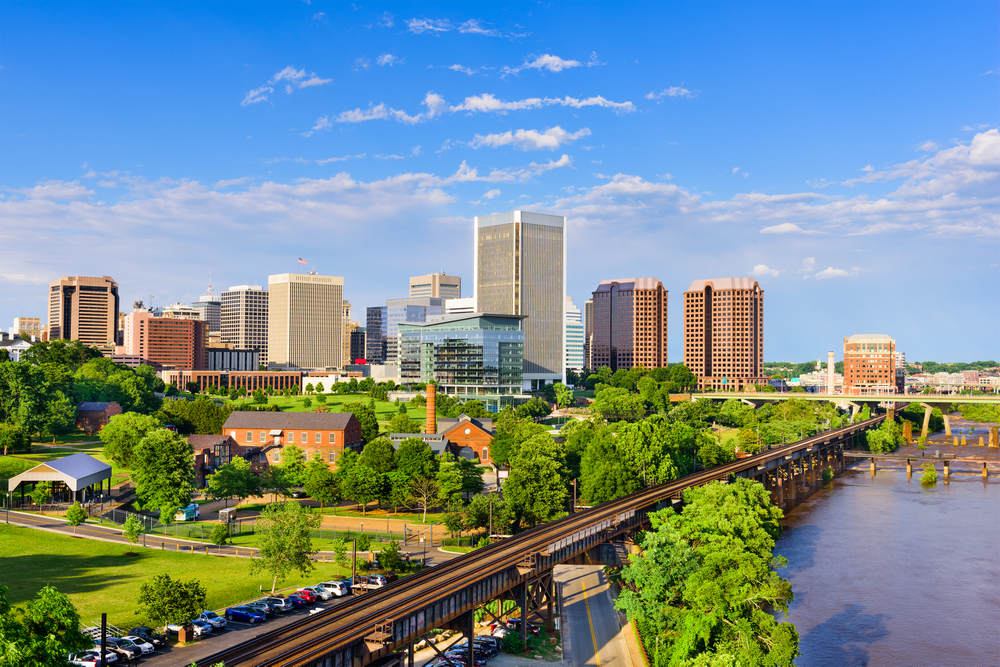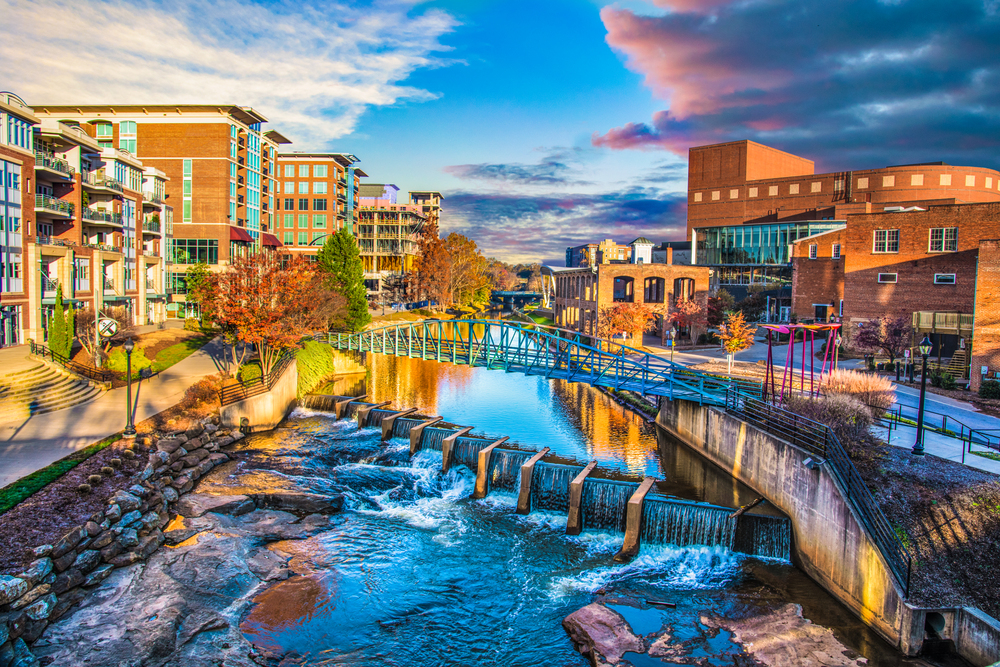When planning a culinary adventure in the United States, most travelers automatically think of renowned food meccas like New York, San Francisco, and New Orleans. However, America’s diverse food landscape extends far beyond these familiar destinations, with unexpected cities across the country offering remarkable dining scenes that often fly under the radar of national attention.
Here is a list of 20 American cities that deserve recognition for their impressive and often surprising food cultures. Each city brings unique flavors and approaches to the table.
Birmingham, Alabama

The largest city in Alabama has transformed into the South’s most exciting food destination, blending traditional Southern cooking with innovative approaches. Chef Frank Stitt pioneered Birmingham’s fine dining scene with Highlands Bar & Grill, which won the James Beard Award for Outstanding Restaurant in 2018 after being a finalist for ten consecutive years.
The city’s food scene extends beyond upscale options to include exceptional barbecue joints, meat-and-three cafes, and international influences that reflect Birmingham’s increasingly diverse population.
Portland, Maine

While its Oregon namesake gets more attention, this compact New England city delivers an astonishing food scene centered around impossibly fresh seafood. Portland’s working waterfront supplies restaurants with daily catches that often go from boat to plate within hours, while the surrounding farmland provides seasonal produce to support creative chefs.
The city has the highest restaurant-per-capita ratio in the United States after San Francisco, offering everything from classic lobster shacks to ambitious establishments like Eventide Oyster Co. that have received national acclaim.
Like Travel Pug’s content? Follow us on MSN.
Madison, Wisconsin

This university town and state capital combines agricultural abundance with a progressive food philosophy centered around locally sourced ingredients. The impressive year-round farmers’ market surrounding Capitol Square has operated since 1972, providing a direct connection between urban consumers and the working farmland visible from downtown high-rises.
Madison’s food culture embraces both Wisconsin traditions—exemplified by exceptional cheese, sausage, and craft beer—and global influences showcased in restaurants ranging from Himalayan to Gambian cuisine.
Boise, Idaho

Idaho’s reputation for potatoes barely hints at the culinary renaissance happening in its capital city, where a farm-to-table ethos thrives amid increasing cultural diversity. The Treasure Valley surrounding Boise produces abundant crops that supply the city’s dynamic restaurant scene.
At the same time, the largest Basque population in the United States contributes a unique cultural influence through restaurants and festivals. Boise’s Bench neighborhood has become an international dining destination with restaurants serving authentic Vietnamese, Ethiopian, and Bosnian cuisine alongside craft cocktail bars and artisanal bakeries.
Richmond, Virginia

The Virginia capital’s dining scene has evolved far beyond Southern standards into one of the most dynamic food cities in the Mid-Atlantic. Richmond’s restaurant revolution builds on strong historical foundations, with innovative chefs reimagining traditional Virginia ingredients and techniques through contemporary perspectives.
The city’s affordable rents have attracted culinary entrepreneurs, creating diverse neighborhoods filled with everything from destination dining establishments to craft breweries, distilleries, and coffee roasters earning national accolades.
Like Travel Pug’s content? Follow us on MSN.
Cincinnati, Ohio

This Ohio River city boasts culinary traditions entirely its own alongside a vibrant contemporary restaurant scene centered in revitalized historic districts. Cincinnati proudly maintains unique regional specialties like goetta (a German-inspired meat-and-grain sausage), Cincinnati-style chili served over spaghetti with distinctive spices, and local ice cream innovations from Graeter’s.
The Over-the-Rhine neighborhood, home to America’s largest collection of 19th-century Italianate architecture, now houses exceptional restaurants, food halls, and specialty shops surrounding the historic Findlay Market, which has been operating since 1855.
Greenville, South Carolina

This charming city in the foothills of the Blue Ridge Mountains has developed one of the South’s most impressive culinary scenes along its rejuvenated Main Street. Greenville combines Southern hospitality with international sophistication, attracting talented chefs drawn to the region’s exceptional agricultural resources and quality of life.
The city’s compact, walkable downtown features over 100 independent restaurants within a 10-block stretch. At the same time, regular food festivals and a year-round Saturday market showcase regional specialties and multicultural influences that are reshaping Southern cuisine.
Albuquerque, New Mexico

Often living in Santa Fe’s culinary shadow, Albuquerque has quietly developed a distinctive food identity rooted in New Mexican cuisine and enriched by international influences. The city’s culinary landscape revolves around the iconic question: “Red or green?”—referring to chile preferences, with “Christmas” ordering both. Signature ingredients like Hatch green chiles, blue corn, and piñon nuts feature prominently in dishes blending Native American, Spanish, and Mexican traditions.
The city also offers exceptional opportunities to experience Indigenous cuisine at places like Pueblo Harvest Café, while its vibrant food truck culture and growing roster of James Beard-nominated chefs are redefining Southwestern dining. From blue corn donuts to piñon coffee, Albuquerque’s flavor is unlike anywhere else in the country.
Like Travel Pug’s content? Follow us on MSN.
St. Louis, Missouri

The Gateway City maintains distinctive local specialties while nurturing an innovative restaurant culture across diverse neighborhoods. St. Louis-style pizza with its cracker-thin crust and Provel cheese, toasted ravioli, and gooey butter cake remain beloved regional favorites.
At the same time, the city’s rich immigrant history continues through exceptional Italian restaurants on The Hill and one of America’s best Bosnian food scenes. The revitalized Delmar Loop, Cherokee Street, and Grove districts showcase St. Louis’ evolution with boundary-pushing restaurants, craft breweries, and creative food entrepreneurs reimagining Midwestern cuisine.
Buffalo, New York

Known primarily for chicken wings, Buffalo has developed a sophisticated and diverse food culture that celebrates both its working-class roots and multicultural present. The city’s proximity to farms and the bounty of the Great Lakes provide exceptional seasonal ingredients, while neighborhoods like Elmwood Village and Hertel Avenue feature independent restaurants serving everything from authentic Burmese cuisine to contemporary farm-to-table establishments.
Buffalo’s distinctive food traditions extend beyond wings to include beef on weck—a roast beef sandwich on a kummelweck roll—, sponge candy, and charcoal-broiled hot dogs, all best enjoyed with locally brewed beer.
Providence, Rhode Island

This compact New England city punches far above its weight class gastronomically, thanks partly to the influence of Johnson & Wales University’s culinary program. Providence combines Italian-American traditions from Federal Hill with Portuguese influences and the contemporary New England cuisine pioneered by local chefs like Benjamin Sukle at Oberlin.
The city’s waterfront location provides exceptional seafood, while the surrounding farmland of southern New England supplies seasonal produce to neighborhood restaurants and the impressive year-round farmers market in Pawtucket.
Like Travel Pug’s content? Follow us on MSN.
Sacramento, California

Often overshadowed by coastal California cities, the state capital has embraced its identity as America’s ‘Farm-to-Fork Capital’ with abundant local produce, wine, and agricultural heritage. Sacramento’s location in the fertile Central Valley puts it at the heart of the nation’s most productive agricultural region, with over 1.5 million acres of farmland surrounding the city.
The diverse local restaurant scene spans from elegant fine dining at The Kitchen to casual excellence at neighborhood spots like Bacon & Butter, all united by exceptionally fresh ingredients often harvested hours before serving.
Cleveland, Ohio

The city’s industrial heritage and immigrant history have shaped a culinary scene that honors tradition while embracing innovation. Cleveland’s West Side Market, which has been operating since 1912, showcases the city’s diverse culinary traditions, with over 100 vendors selling everything from Hungarian sausage to Middle Eastern specialties.
The revitalized Ohio City, Tremont, and Detroit-Shoreway neighborhoods feature ambitious restaurants like The Greenhouse Tavern and Momocho, while the city’s Eastern European heritage lives on through excellent pierogi, kielbasa, and paczki found throughout the metropolitan area.
Louisville, Kentucky

Known worldwide for bourbon and the Kentucky Derby, Louisville has developed a sophisticated food culture that goes far beyond mint juleps and hot browns. The city’s restaurant scene combines Southern cooking traditions with international influences and access to exceptional local agriculture from nearby farms.
Louisville’s NuLu district has emerged as a culinary hotspot with award-winning restaurants like Harvest and Decca. At the same time, the city’s historic bourbon heritage has inspired innovative bar programs and distinctive food pairings that celebrate America’s native spirit.
Like Travel Pug’s content? Follow us on MSN.
Detroit, Michigan

The Motor City’s culinary revival parallels its broader renaissance, with distinctive neighborhoods offering exceptional dining experiences that reflect the city’s diverse heritage. Detroit’s Eastern Market, operating since 1891, remains the beating heart of the local food scene, where restaurateurs shop alongside families for freshly harvested produce and locally produced specialties.
The city maintains unique food traditions, including Detroit-style pizza with its caramelized cheese edge, Coney Island hot dogs topped with all-meat chili, and exceptional Middle Eastern cuisine in nearby Dearborn, home to America’s largest Arab American community.
Asheville, North Carolina

Nestled in the Blue Ridge Mountains, Asheville has become a Southern food powerhouse, pairing Appalachian heritage with forward-thinking, seasonal cuisine. The city’s restaurant scene thrives on hyper-local sourcing—chefs partner directly with farmers, foragers, and cheesemakers in the surrounding region.
Standouts like Cúrate (Spanish tapas) and Rhubarb (farm-to-table Southern) have earned national attention, while the city also boasts more breweries per capita than almost anywhere in the U.S., adding to its reputation as a culinary destination. Don’t miss the inventive biscuit sandwiches, trout dishes, and wild mushroom specialties that reflect Asheville’s mountain terroir.
Indianapolis, Indiana

The Hoosier capital has transformed from culinary flyover country to a legitimate dining destination with distinct neighborhoods offering unexpected excellence. Indianapolis food traditions like breaded pork tenderloin sandwiches and sugar cream pie remain beloved local specialties, now complemented by ambitious restaurants drawing inspiration from Indiana’s agricultural bounty.
The city’s culinary evolution is especially evident in areas like Fountain Square and Mass Ave, where independent restaurants, craft breweries, and food halls like The Garage have created vibrant dining districts unimaginable just a decade ago.
Like Travel Pug’s content? Follow us on MSN.
Tucson, Arizona

Tucson, the first American city designated a UNESCO World Heritage Site for Gastronomy, maintains North America’s longest agricultural history, dating back over 4,000 years. The city’s distinctive Sonoran cuisine features unique ingredients like chiltepins, mesquite flour, and white Sonoran wheat, often in dishes that blend Native American, Mexican, and Anglo influences.
Tucson’s food heritage remains vibrantly alive through restaurants like Café Poca Cosa and El Charro, farmers markets featuring native foods, and annual festivals celebrating the region’s distinctive agricultural traditions and border-crossing culinary culture.
Omaha, Nebraska

This Midwestern city offers far more than the exceptional steaks most visitors expect, with diverse neighborhoods showcasing both immigrant traditions and contemporary innovation. Omaha’s historic ties to the meatpacking industry ensure outstanding beef, while the surrounding agricultural abundance provides restaurants with exceptional seasonal ingredients.
The city’s distinctive neighborhoods each offer unique dining experiences, from the Old Market’s cobblestone charm to Benson’s hipster vibe and the authentic Mexican restaurants along South 24th Street, all demonstrating how this once-predictable food city has evolved into a genuinely exciting culinary destination.
Oklahoma City, Oklahoma

The Sooner State’s capital has undergone a remarkable culinary transformation, building on cowboy cooking traditions while embracing diverse influences that reflect the city’s changing demographics. Oklahoma City’s distinctive food culture includes onion burgers pressed with thinly sliced onions that caramelize directly into the patty, alongside authentic Vietnamese cuisine from the city’s substantial Vietnamese American community.
Neighborhoods like the Plaza District, Paseo Arts District, and Uptown 23rd have become restaurant destinations, while the city’s Native American heritage provides unique culinary perspectives found nowhere else.
Like Travel Pug’s content? Follow us on MSN.
Beyond the Expected Food Cities

These twenty cities demonstrate how America’s culinary landscape extends far beyond the famous food destinations that typically dominate national conversations. Each city offers distinctive food experiences shaped by regional ingredients, immigrant histories, and local traditions, often at price points more accessible than those in better-known culinary capitals.
Whether you’re seeking authentic regional specialties or innovative dining from up-and-coming chefs, these surprisingly delicious cities prove that remarkable food experiences await in unexpected places across America’s diverse culinary landscape.
More from Travel Pug

- Cities Growing so Fast You Won’t Recognize Them in 10 Years
- 13 Destinations Where Tourists Regularly Regret Their Trip
- 20 Obscure WWII Sites Even History Buffs Don’t Know About
- 10 Under-the-Radar Mountain Towns That Are Both Affordable and Beautiful
- Remote Villages in Europe Where You Can Live for Free in Exchange for Work
Like Travel Pug’s content? Follow us on MSN.
